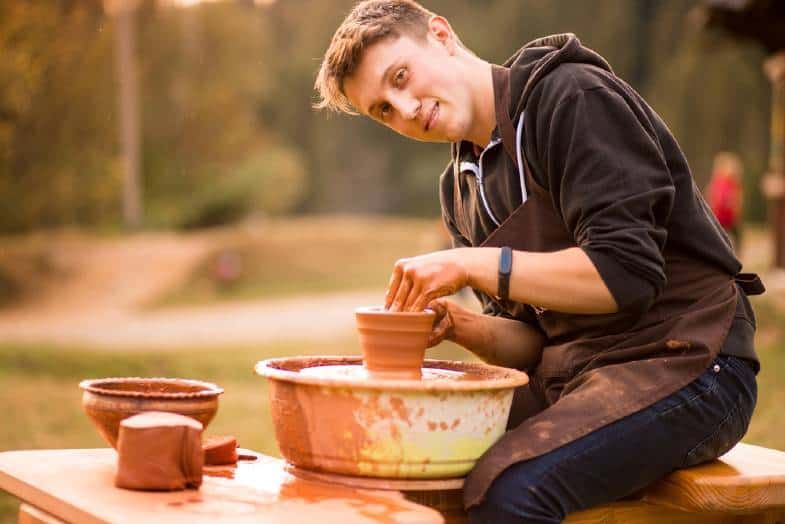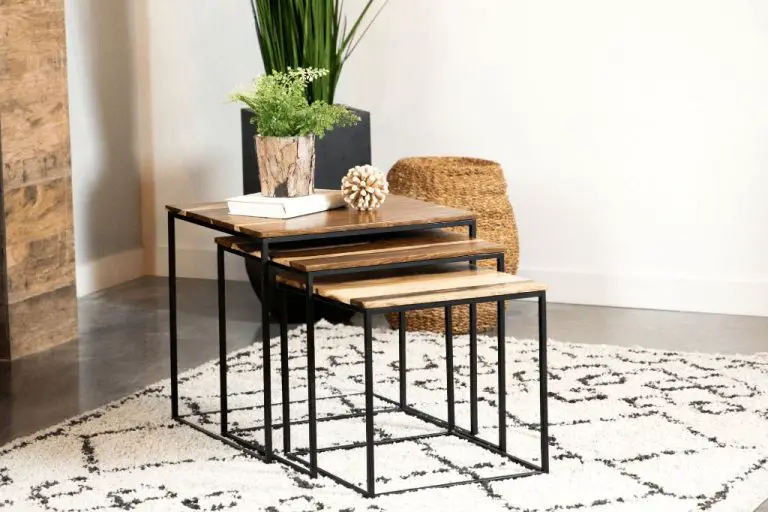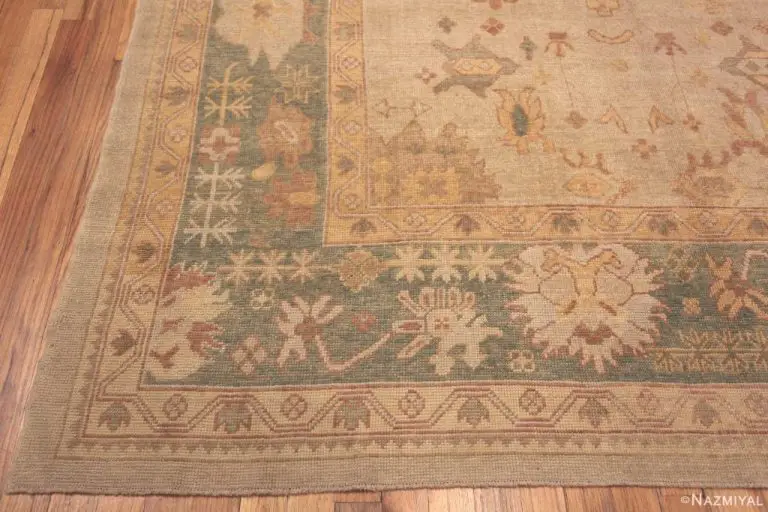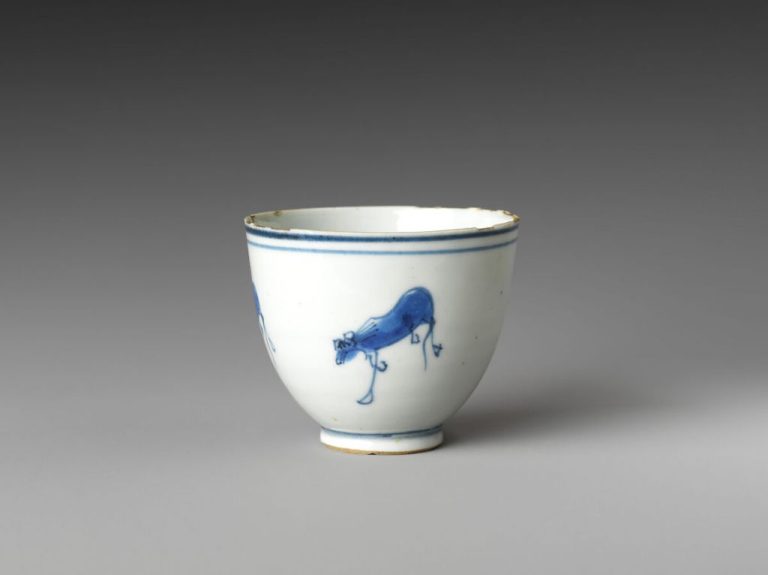What Is The Best Surface To Do Pottery On?
An important part of creating pottery is choosing the right surface to work on. The surface that a potter uses affects the workability, absorbency, durability, texture, and appearance of the finished piece. There are several popular options to choose from, each with their own pros and cons. The surface must provide enough friction and absorbency for the clay to stick, while being smooth enough to shape. It also impacts the final look and feel. This article will discuss the key factors in selecting an ideal pottery surface, the most common choices, and how to decide what works best for your needs.
Workability
Workability refers to how easy or difficult it is to manipulate and shape clay. This depends largely on the clay’s texture and plasticity. According to Reddit user CeramicsExpert, birch plywood is an excellent general hand building surface because it works well with a variety of clay textures.
More plastic, moist clays with high absorbency are typically easier to work with. As noted in a 2018 study by Barnes et al., workability measures the “ease with which clay can be manipulated and shaped” and depends on factors like moisture content and clay particle size. Very coarse or sandy clays can be more difficult to hand build with.
Clays with higher plasticity and finer particles tend to be more malleable and workable when hand building. However, extremely plastic clays can also be sticky and prone to slumping or tearing if not properly wedged and conditioned. The optimal workability depends on finding the right balance for the clay body and project at hand.
When choosing a work surface, its texture and absorbency should suit the clay’s needs. Smooth, non-absorbent surfaces like plastic can work well for plastic clays but may dry out less plastic ones. More absorbent surfaces like wood or plaster can help prevent overly sticky clays from adhering too much but may also draw out moisture quickly.
Testing different work surfaces with the specific clay chosen for a project allows potters to find the right balance for optimal workability.
Absorbency
The absorbency of the clay surface used for pottery has an important impact on workability and durability of the finished piece. The clay’s ability to absorb and hold moisture determines how easily it can be formed, manipulated, and joined without cracking or suffering loss of structural integrity. Pottery clays range widely in their ability to absorb water.
According to Seattle Pottery Supply, impervious porcelain has a very low water absorption rate of less than 0.5%. Vitreous or semi-vitreous porcelain absorbs 0.5-3%, while standard ceramic clay bodies absorb 3-7% of their weight in water (https://seattlepotterysupply.com/pages/water-absorption-in-pottery-clay). Higher absorbency makes the clay more plastic and workable when wet, but can lead to problems like warping or cracking during drying and firing if the moisture is not consistently dispersed. Surfaces that absorb less moisture hold their form better but can be more difficult to center and shape.
Finding the right balance of absorbency for the pottery style and methods being used is an important consideration. Testing moisture absorption rates of different clay bodies can help potters select the most suitable surface for their needs.
Durability
One of the most important aspects of choosing a pottery surface is its durability and strength for longevity. According to Ceramic Arts Network, testing durability can be done by filling a test piece with water and microwaving it for 1 minute – if the clay body isn’t sufficiently vitrified, the water will absorb into the surface (https://ceramicartsnetwork.org/pottery-making-illustrated/pottery-making-illustrated-article/In-the-Studio-Testing-Durability). The principle factors that determine durability are the glaze chemistry and melting temperature, which affect wear resistance and how well it holds up to leaching by acids/bases (https://digitalfire.com/glossary/glaze+durability).
Choosing a durable surface like stoneware that vitrifies well at high temperatures will yield stronger pottery that withstands daily wear and tear. Porcelain in particular is valued for its fine-grained compact structure after firing, making it very strong. On the other hand, low-fire earthenware has lower durability. Testing durability before deciding on a surface is key.
Texture
The texture of the clay working surface is an important consideration. A surface that is too smooth can make it difficult for the clay to adhere properly. Conversely, a surface that is too rough can leave undesirable marks on the bottom of pottery pieces.

An ideal texture will provide just enough grip to keep the clay from sliding around, while still allowing the piece to be easily lifted off when completed. Many potters prefer a canvas or linen texture for the right balance of traction and release.
Popular working surfaces like plaster and wood can be customized to achieve the desired texture. For plaster, a sandy finish is often created by mixing sand into the final coats. Wood surfaces are commonly grooved or carved. The texture can also evolve naturally through extended use and wear.
While personal preference dictates texture, ceramists must also consider the type of clay they are using. A surface that pairs well with stoneware may be ill-suited for porcelain’s more delicate properties (Ceramic Arts Network, 2022). Testing different textures to find the ideal match for clay and technique is recommended.
Popular Surfaces
There are a few surfaces that are commonly used for pottery and ceramics work. Some of the most popular include wood, canvas, and plaster (Source).
Wood surfaces like wooden boards or tables are a classic option. The smooth, non-porous surface makes it easy to roll out slabs of clay and work on handbuilding projects (Source). Wood also provides a bit of grip to keep clay from sliding around too much. Popular woods choices are birch, poplar, and maple.
Canvas, like an artist’s canvas pad or linen canvas, is another favorite surface for handbuilding and sculpting with clay. The fabric texture provides traction to prevent slipping. Canvas absorbs water well and is suitable for clay that needs to be kept moist. An advantage of canvas is that it’s lightweight and portable.
Plaster surfaces like plaster bats and plaster boards allow clay to be removed cleanly after working. The plaster doesn’t stick to clay but provides enough grip while working. Plaster absorbs water well and keeps clay moist. It can be cast into custom shapes and sizes as needed.
Pros and Cons of Different Pottery Surfaces
When choosing a surface for handbuilding pottery, there are many factors to consider. Each type of surface has its own unique benefits and drawbacks.
Wood surfaces like pine boards are inexpensive and easy to cut to size. The texture of the wood grain can create interesting effects in the clay. However, the absorbency of wood can lead to cracks and make releasing work difficult (Source).
Natural stone like granite is extremely durable and provides a smooth surface to work on. But stone can be heavy, cold, and expensive. The hardness of stone can also quickly wear down clay cutting tools (Source).
Plaster surfaces are affordable, absorbent, and easy to repair. The texture is perfect for handbuilding and leaves a distinctive “plaster effect” on clay. However, plaster is fragile and can break over time. It also requires sealing to prevent damage from moisture (Source).
In contrast, concrete provides an indestructible surface with good absorption properties. But the coarse texture can scrape clay, and concrete is extremely heavy and permanent. Acidic clay can also erode concrete over time (Source).
Canvas and ceramic tiles provide smooth, versatile surfaces. However both lack absorbency, which can lead to issues. Tiles can also crack under heavy weights (Source).
Overall, plaster seems to provide the best balance of affordability, absorbency, texture, and ease of repair. But every potter should experiment to find their preferred surface for handbuilding projects.
Maintenance
Keeping your pottery surfaces in good condition requires regular care and cleaning. According to Caring for Your Clay Pottery: Essential Tips and Techniques, you should avoid harsh scrubbing and instead use a mild dish soap and soft sponge or cloth to gently clean surfaces. Always rinse thoroughly with warm water and dry completely after washing. Caring for your Ceramics recommends handwashing with a mild soap to get the longest life from your pottery. Avoid using harsh scrub pads that could scratch or damage the surface.
For unglazed surfaces, protection is key. Apply a food-safe finish like beeswax regularly to protect from moisture and staining. Avoid exposing pottery to rapid temperature changes which could cause cracking or crazing. Always check manufacturer instructions for any specific care recommendations. With proper maintenance and gentle cleaning, you can keep your pottery surfaces looking their best for many years.
Costs
Making pottery can be an expensive hobby depending on the equipment and materials you purchase. According to Pottery Crafters, you should budget between $300 to $6500 to get started with basic pottery equipment like a pottery wheel and kiln. New electric kilns cost $500 on the low end and up to $6000 or more for large, industrial kilns according to Soul Ceramics. Ongoing costs include purchasing clay, glazes, tools, and paying for kiln firings if you don’t have your own kiln.
Conclusions
Based on the research, the best surface for pottery overall seems to be a canvas-covered board. According to The Pottery Wheel, canvas has just the right amount of grip to keep clay from sliding around, while still allowing it to be moved when needed. The fabric backing helps absorb moisture and prevents warping. Canvas is also durable and easy to clean. Other good options are wood, MDF or acrylic boards, and commercial wedging tables, which provide smooth and sturdy surfaces. However, avoid metal and stone surfaces, which can discolor clay. Highly porous surfaces like Concrete also risk drying out clay too quickly. Ultimately, canvas offers an affordable, versatile surface that beginners and experts alike can use for wedging, handbuilding, and sculpting.





